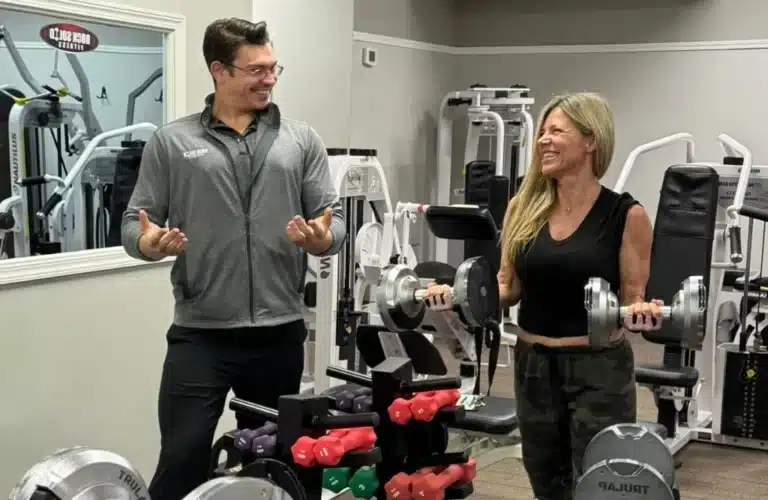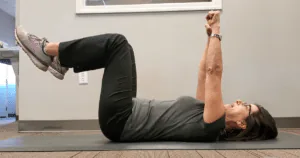How High Intensity SAFE Strength Training Improves Posture and Core Strength
Maintaining good posture and a strong core is essential for overall health, mobility, and injury prevention. Poor posture can lead to chronic back pain, muscle imbalances, and even joint issues. A weak core contributes to poor spinal alignment, limiting mobility and increasing the risk of injuries over time.
One of the most effective ways to improve both posture and core strength is through High Intensity SAFE Strength Training (HIST). This method of training focuses on controlled, high-intensity exercises that strengthen the muscles supporting your spine, improve core stability, and promote better body mechanics in daily life.
In this blog, we’ll explore how HIST enhances posture and core strength while ensuring safety and effectiveness at every fitness level.
Why Posture and Core Strength Matter
The Impact of Poor Posture
Many people experience posture-related discomfort due to prolonged sitting, poor movement habits, or muscle imbalances. Poor posture can lead to:
- Chronic neck and back pain
- Joint strain and discomfort
- Reduced flexibility and mobility
- Increased risk of musculoskeletal injuries
Strength training that targets posture and core stability helps correct these issues by reinforcing proper alignment and building the strength necessary to support an upright posture throughout the day.
The Role of the Core in Posture
The core is more than just the abdominal muscles—it includes the lower back, obliques, and deep stabilizing muscles. A strong core supports spinal alignment, reduces stress on the back, and allows for better control over movement.
Scientific studies confirm that core strengthening exercises improve postural control and spinal alignment, reducing the risk of back pain and improving functional movement patterns.
How High Intensity SAFE Strength Training Enhances Posture and Core Strength
1. Strengthening the Muscles That Support Proper Posture
HIST focuses on full-body compound movements that engage multiple muscle groups simultaneously. Exercises like leg presses, lat pulldowns, lat rows, and rear delts reinforce spinal alignment by strengthening the posterior chain—a group of muscles that includes the lower back, glutes, and hamstrings.
These exercises train the body to maintain an upright, aligned position, reducing slouching and preventing postural imbalances that often lead to pain and discomfort.
Scientific Insight: A study published in the Journal of Strength and Conditioning Research found that individuals who engaged in strength training exercises experienced significant improvements in postural alignment and muscular endurance compared to those who performed only flexibility or aerobic exercises.
2. Engaging the Deep Core Muscles for Better Stability
Unlike traditional core workouts that focus solely on floor crunches and planks, HIST incorporates movements that challenge the deep core stabilizers. Exercises such as our Nautilus Rotary Torso, Nautilus Abdominal Crunch, and Nautilus Low Back Extension get you off of the floor and onto equipment that better target your full arsenal of core muscles to build internal core strength, improving overall posture and balance.
A strong core:
- Supports the spine and prevents excessive curvature
- Enhances coordination and movement efficiency
- Reduces the risk of lower back strain and injury
Scientific Insight: Research in the European Journal of Applied Physiology suggests that progressive resistance training is one of the most effective ways to activate deep core muscles responsible for spinal stability and postural control.
3. Correcting Muscle Imbalances That Lead to Poor Posture
Muscle imbalances develop when certain muscles become overactive while others weaken. For example, sitting for long periods weakens the glutes and core while tightening the hip flexors and lower back muscles—a combination that contributes to poor posture.
HIST addresses these imbalances by incorporating:
- Posterior chain strengthening (e.g., hamstrings in your lower body, mid/upper back, and neck extensor muscles)
- Core stabilization exercises (e.g., internal & external obliques, low back extensors & spine stabilizers, transverse abdominis muscle)
- Upper back activation (e.g., rows, scapular retractions)
By correcting muscle imbalances, HIST promotes a natural, upright posture that reduces pain and improves overall movement patterns.
4. Improving Spinal Alignment and Mobility
HIST helps maintain spinal alignment by strengthening the erector spinae muscles, which support the spine and keep it in a neutral position. Additionally, mobility-focused strength training—such as controlled resistance movements with full range of motion—enhances flexibility and joint health, allowing for smoother, more efficient movement.
Scientific Insight: A study in the Journal of Rehabilitation Research & Development found that individuals with poor posture who engaged in targeted strength training improved their spinal alignment and reported reduced back pain compared to those who followed general fitness routines.
Why Strength Training for Posture and Core Strength Leads to Long-Term Benefits
Improving posture and core strength through High Intensity SAFE Strength Training is not just about aesthetics—it’s about building a foundation for better movement, injury prevention, and long-term spinal health.
By focusing on:
- Proper muscle engagement to support spinal alignment
- Core strengthening for stability and control
- Balancing muscle development to correct postural issues
- Enhancing mobility and flexibility for better movement patterns
… you create a stronger, healthier body that moves efficiently and pain-free.
At Rock Solid Fitness, we help clients improve their posture and core strength through safe, effective, and customized high-intensity training. If you’re ready to strengthen your core, improve your posture, and reduce pain, try a free training session and experience the benefits of HIST firsthand!
Free Report + 2 Instructional Videos
7 Simple Low Back Exercises You Can Do At Home Right Now
This Free PDF guide with an instructional video will show you how to live without back pain holding you back.

Get The FREE Guide + 2 BONUS Videos!
Just tell us where we should send it.






